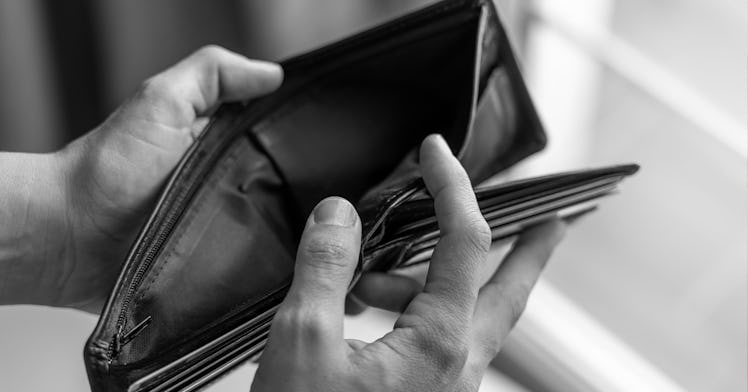Most Families Can’t Afford A $1,000 Emergency Expense
Our economy is not healthy.

A survey conducted by Bankrate, a financial advisory group, in December has found that less than 4 in 10 Americans can afford an unplanned or financial emergency expense of $1,000 — so that appliance blowing out, or that car needing maintenance, or that ambulance ride, isn’t affordable for 60 percent of Americans, the study shows.
The poll of 1,000 American adults, according to CBS News, found that only 39% of people who responded to the nationwide survey could handle a surprise bill at that cost and that at least 38% total would have to use other means: 18 percent of respondents said that they would have to finance the expense with a credit card, and 12 percent said they would help pay it through help from family and friends. Eight percent said they’d have to take out a loan.
The study, for eagle-eyed followers of the health of Americans pockets, should not be all that surprising and is in keeping with the health of the American economy. A 2018 survey found that 40 percent of Americans could not afford an emergency expense of more than 400 dollars.
With an unemployment rate of over 6 percent, millions and millions of Americans out of work, and the general costs of living from student loans, rent, mortgages, education, child care, and student loan debt, the precarious financial situations that American families had built for themselves appear to be falling apart.
But actually, the long-running survey has been tracking family savings for seven years and suggests that the amount of families who can afford such costs has actually held steady, with something like 37 to 41 percent of families able to afford a $1,000 calamity at any given time — which might mean that our economy is fundamentally in trouble beyond the current crisis.
The survey has also found that, of course, the higher income a family is, the more money they tend to have in savings — but not nearly as much as you might think. 58 percent of households earning $75,000 or more can afford a $1,000 emergency expense, and only 21 percent of households making less than $30,000 could afford the expense. Age, of course, matters too — 33 percent of millennials can afford the expense, while almost half of Gen Xers and Boomers can.
Moving forward, those $2,000 stimulus checks could make a huge difference in the lives of Americans whose finances and savings are suffering because of COVID, but also, clearly, in general, due to wealth inequality. Hopefully, the Democrat House, Senate, and White House will make getting money in people’s hands a top priority so they can stimulate the economy and dig themselves out of their financial situations.
This article was originally published on